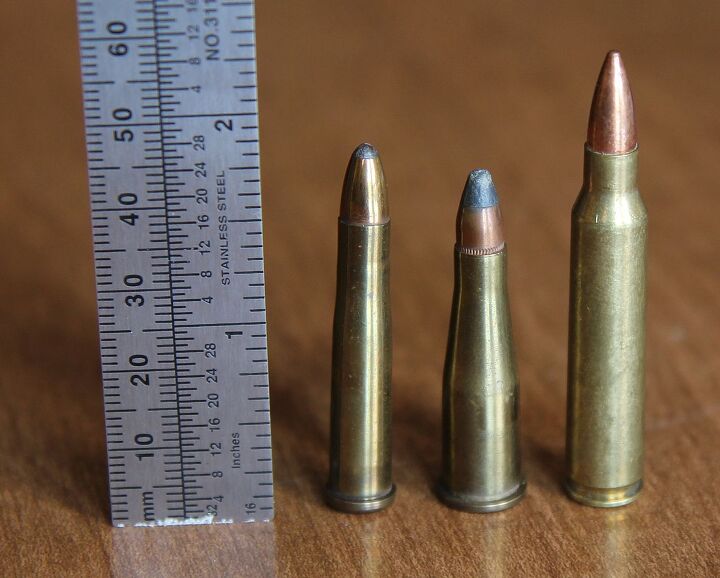Getting Fast with the S&W Model 53
I was taking a break at a hunting base camp resupplying to go after elk after a hard week of hunting mule deer in deep snow, when the camp cook brought out a revolver to show us after dinner. At first, I thought it was just a nice example of a 4-screw, 6″ barrel S&W N-Frame. Then, he brought out the ammo for it, which was something I had not seen before: .22 Remington Jet. I was looking at an S&W Model 53, one of the very few firearms ever chambered for this curious, bottlenecked .22 cartridge.
The cook swore by his revolver and has used it to harvest quite a large quantity of game over the past half century. Apparently, the flat-shooting cartridge did well on coyotes and other small to medium sized game, out to distances of about 100 yards. The 40gr and 45gr ammunition he had worked up for it as a reloader apparently ticks along right around 2000fps out of his revolver, but some .22 Jet loads can achieve 3000fps out of rifle length barrels.

L to R: .22 Hornet, .22 Jet, .223 Remington. Image Source: Wikimedia Commons
Jet Back to the past
The development of the .22 Jet took place in the late ’50s/early ’60s by Remington, and Smith & Wesson was the early adopter of the cartridge with their model 53 revolver, introduced in 1960. The Model 53 was equipped with an adjustable rear sight, and only ever made blued with walnut grips. It was available with a 4, 6, or 8 3/8″ barrel, and could be fitted with a .22LR cylinder (which naturally could also fire .22 S or L ammo.). Later in its production life, a modification to the 3-screw frame was made, and it was known as the 53-2.
Apparently, a lot of shooters had issues with the long tapered neck of the .22 Jet pushing the case back upon firing, therefore locking up the cylinder. I am not sure why, but the camp cook never had any problems with this phenomenon. The .22 Jet never really caught on, and production of the Model 53 ceased in 1974. The Model 53 was not the only revolver chambered in a necked down, bottlenecked cartridge, with the short-lived Taurus Raging Bee, chambered in .218 Bee, as another example.
The .22 Jet today
Though the Model 53 has been long out of production, 45gr SP .22 Jet ammo is still produced by PPU. Most current owners of .22 Jet can also create their own brass from the parent case, .357 Magnum, and load the brass with available .223 caliber 40 and 45gr bullets from a multitude of manufacturers. T/C offered .22 Jet chambered barrels for their Contender line for a time, and firing this little round from a rifle is definitely the best way to realize its full velocity potential. Nevertheless, it remains an interesting, early foray into the world of high velocity, bottlenecked pistol cartridges, for a revolver, no less!
 Your Privacy Choices
Your Privacy Choices
